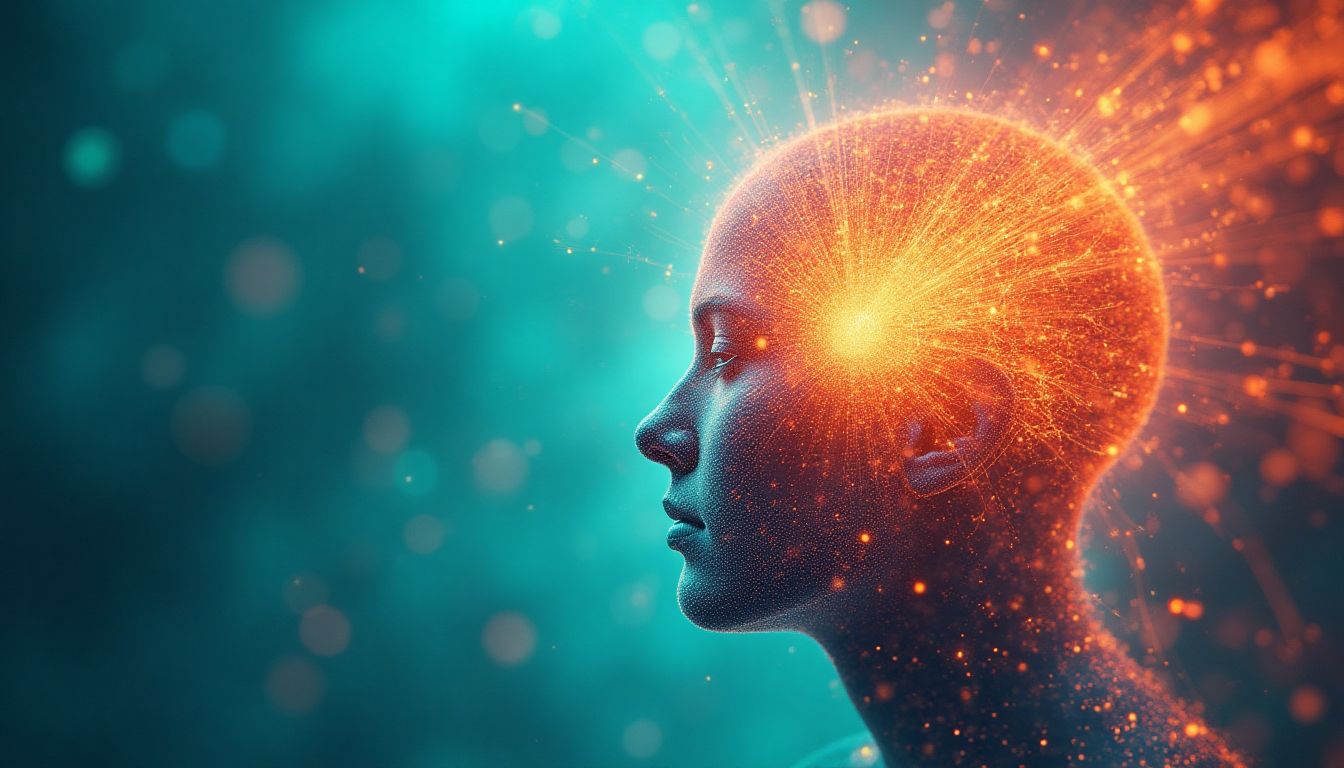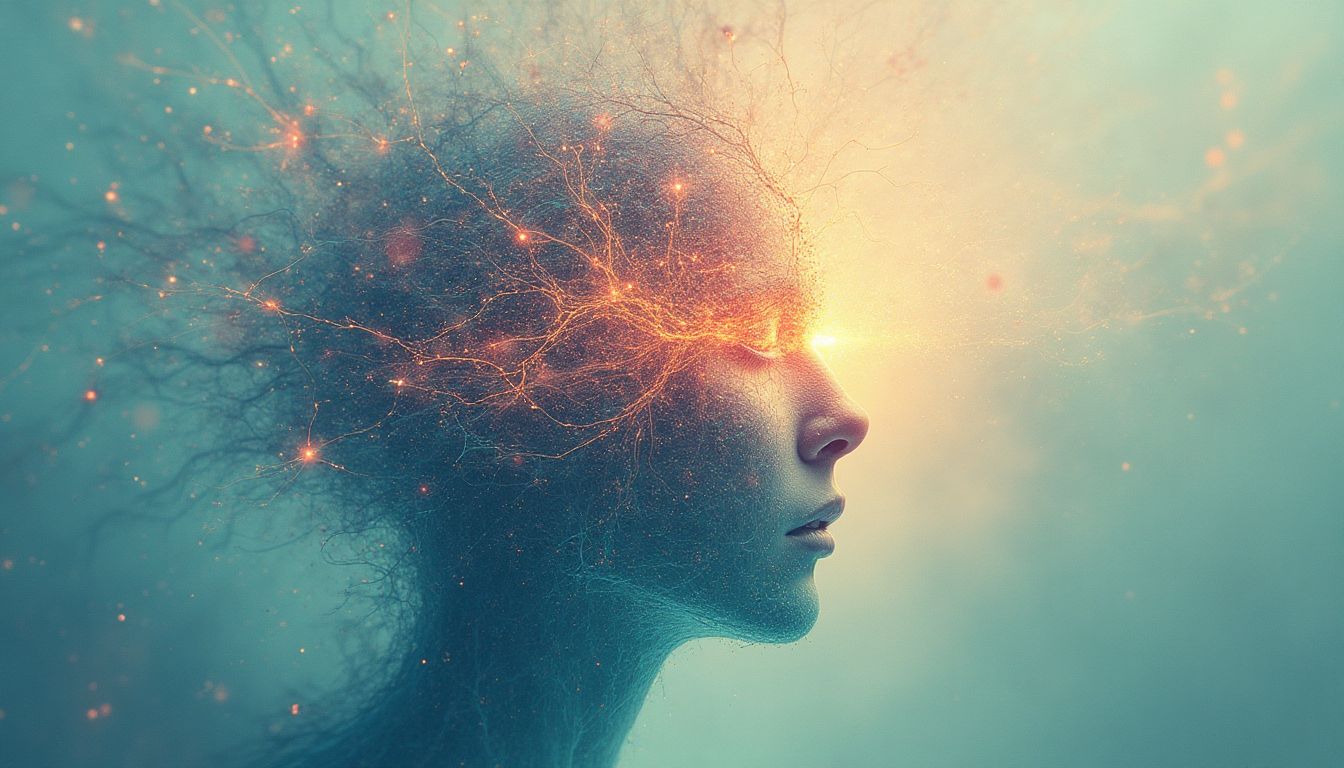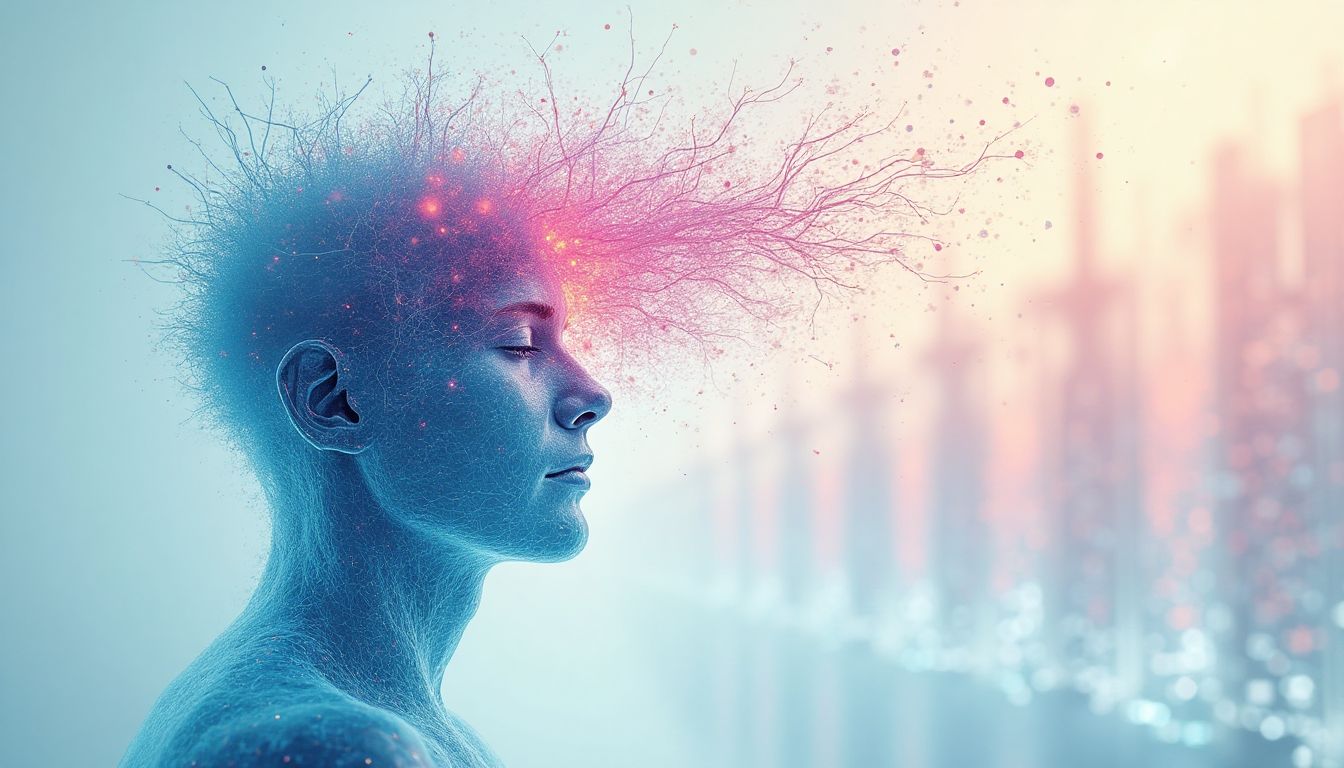Introduction: The Evolution of Consciousness in a Post-Biological Era
"The only true wisdom is in knowing you know nothing." This quote by Socrates carries profound weight as we venture into the territory of post-biological sentience. As we stand on the precipice of transforming human consciousness into pure information, it begs the question: Are we ready to redefine what it means to be human? Buckle up, because this isn't your run-of-the-mill sci-fi novel—this is reality in the making.
What if I told you there's a 90% chance that future generations will choose to exist as data rather than biological entities? This isn't some wild dystopian theory. It's the complex dance of Artificial Superintelligence (ASI), an emerging frontier where minds like Nick Bostrom and Ray Kurzweil have already laid the groundwork.
So where do we start in unraveling this digital odyssey? First, let's set the stage with the backdrop of technological giants like OpenAI, Google, and Anthropic—who are not just part of the game, but are actively designing the board. With every line of code, they inch us closer to an existence where our physical form is optional.
Think of philosophers like Plato, who relentlessly questioned the fabric of reality. In a world where consciousness can be uploaded, detached from its biological shell, Plato's allegory of the cave takes on new resonance. Are we the prisoners, or have we now become the ones controlling the shadows?
This journey isn't just about wires and binary code. It extends into the realms of philosophy, ethics, and socio-political landscapes—a complex tapestry interwoven by thinkers such as Michio Kaku. Their wisdom urges us to embrace change while scrutinizing its impact.
Post-Biological Sentience refers to the potential future stage of human evolution where consciousness is digitized, allowing humans to exist as pure information within Artificial Superintelligence (ASI) environments, thus transcending biological limitations.
Understanding Consciousness in the Age of ASI
Defining Consciousness: Historical Perspectives
From ancient times, humans have tried to understand consciousness. Thinkers like Plato and Aristotle asked if the mind is separate from the body. Fast forward to René Descartes, who famously said, "I think, therefore I am." This suggested our existence is tied to our ability to think. Let’s teleport to the 20th century, where Sigmund Freud introduced the idea of the unconscious mind, a mysterious realm of thoughts and desires beneath the surface.
As technology progressed, scientists began to explore if consciousness is just a brain function. Theories bloomed like spring flowers. The neuroscience field, bright and shiny, attempted to connect consciousness to brain activity. Researchers like Francis Crick took a stab at unravelling this cosmic puzzle. Some believe consciousness is a special type of information process, akin to a computer running a program. Other schools of thought see consciousness as a magical theater where thoughts dance in and out of spotlight.
Each idea about consciousness is like a piece of an enormous jigsaw puzzle; fascinating yet incomplete. Like trying to explain what chocolate tastes like to someone who's never tasted it. And now, with the rise of Artificial Superintelligence (ASI), we're not just solving a puzzle—we're adding dimensions to it. Hold on to your hats, folks, the ride into understanding consciousness is only getting weirder!
Information Theory and Consciousness
When Claude Shannon invented information theory in the mid-20th century, little did he know he was laying the groundwork to explain consciousness. Imagine consciousness as layers of an onion, with information theory peeling back each layer to reveal the juicy core. Information theory looks at consciousness as data being processed by the brain, similar to a smartphone processing apps.
The real excitement starts when we think about consciousness as a form of information processing. If our brains are advanced calculators, could computers someday become conscious by processing data similarly? Here's where artificial intelligence steps into the limelight. Like a starry-eyed actor eager for its debut, AI began processing data faster than ever thought possible.
Consider the Blue Brain Project. It's an audacious attempt to digitally reconstruct the human brain. Yes, every neuron and every connection, like a cosmic game of connect-the-dots! Just think, if consciousness can be broken down into digits and algorithms, would that mean uploading your mind into a computer? No, it’s not science fiction. It’s the burgeoning reality where data meets our deepest perceptions.
While we may not have all the answers, information theory gives us the tools to think about the future. Imagine a world where consciousness turns into a transferable file—like a mini-me on a USB stick! These concepts open galaxies of fascinating prospects and frightening contradictions. Are you ready to become a being of pure information?
The Spectrum of Sentience in Biological and Non-Biological Entities
Sentience is a measure of how aware an entity is of itself and the world around it. Picture it as a light dimmer, with humans cranked up, illuminating everything, while other entities have varying levels of glow. Traditionally, sentience has been a hallmark of living beings. But in the age of AI, the lines become blurry.
Consider our biological pals first. Over millennia, humans, elephants, and even octopuses have exhibited sentient behavior. But now, non-biological entities like chatbots are entering the scene. They mimic human conversation, answering questions as if they’ve suddenly gained a spark of life. Is this sentience or just very clever imitation? It’s the great cosmic debate!
To truly grasp the spectrum of sentience, it helps to build a scale, like a ladder to understanding. Biological beings occupy the top rungs, basking in their neural complexity. Non-biological entities, such as AI and IBM's Watson, occupy the lower rungs but are climbing at breakneck speeds. Will they ever reach parity with humans? Only time—and perhaps an honest algorithm—will tell.
In this dawning era, we can expect new forms of sentient expressions. Imagine a robot symphony playing music composed by a digital maestro. Or AI artists exhibiting paintings at futuristic galleries. The implications are as exhilarating as they are unsettling, challenging our notion of sentience and what it really means to be “alive.” Embracing non-biological inhabitants in our spectrum could expand the canvas of consciousness, painting it with vibrant strokes of mystery and wonder.
The Transition to Post-Biological Sentience
The Role of Artificial Superintelligence (ASI)
Imagine waking up one morning, pouring yourself a cup of coffee, and wondering, "What if I could upload my mind into a digital world and live forever?" Elon Musk might call it far-fetched, but the development of Artificial Superintelligence (ASI) brings us closer to this reality. Super smart computers not only calculate the fastest route for pizza delivery, but they also open doors to a world where minds can transcend biology.
ASI is the key in bridging our biological brains with the virtual realm. Like the Great Wall of China, it works as both a barrier and a connector. The sheer computational power of ASI enables extensive data processing. It's akin to the brainy friend in the group—always analyzing, always suggesting the best movies on Netflix before you even think of it.
In the post-biological transition, computers won't just play chess—they'll create symphonies and paint masterpieces. By integrating with ASI, humans can potentially expand their intellectual horizons. ASI’s rapid learning abilities would essentially make it "The Flash" of intelligences. A vast database of human knowledge is processed in a blink, making the concept of a computer-friendly consciousness not too much of a stretch.
So, why integrate human consciousness with ASI? Imagine traveling the skies, unbounded by earthly constraints. This isn’t merely a desire for immortality but a chance to explore the stars within and beyond oneself. By leveraging ASI, humans have the chance to surpass biological limitations and become literal timeless travelers of the cosmos.
Mechanisms of Transferring Consciousness: Theoretical Frameworks
Transferring human consciousness into a machine isn’t like moving files to a USB stick. Instead, it's like translating ancient Greek texts—challenging but oh-so-exciting! First off, it requires mapping out every neural connection in the brain. Each neuron, synapse, and connection forms the intricate web that makes you, well, you.
This daunting task involves understanding the brain as both binary and poetic, like Shakespearian code. One method is neural mapping, creating a high-resolution blueprint of the mind, like a 3D map with billions of waypoints. Not only researchers are heading this exploration. Tech giants like Google and Facebook's AI Research unit are diving hand-first into the realm of digital consciousness. With their advancements, what once seemed purely fictional is now within tantalizing reach.
Next comes simulating the human brain's functions digitally while maintaining the essence of emotions, identity, and memories—no small feat! Technologies such as digital neuromorphic systems and quantum processing are the potential magic wands here. Imagine capturing the complexities of a mind with the elegance of a butterfly flapping its wings.
Harnessing quantum computing could offer the processing muscle to simulate real-time brain activities. And wizards working on OpenAI are unlocking new predictive models to perfect the art of transferring consciousness. We are on the cusp of building a bridge—a futuristic neural bridge, mind you—between our biological past and digital renaissance.
Case Studies in Human-Machine Integration
If the mind is indeed movable to machines, who's already got a head start? Look no further than Ray Kurzweil, the modern-day Nostradamus of digital transformation. Kurzweil predicts that humans will achieve digital immortality by reaching the Singularity—a point all our sci-fi dreams converge.
Neuralink, another of Musk's ventures, is doing more than mere brain games. It's crafting direct brain-to-interface technologies. If successful, their breakthroughs promise seamless communication between humans and computers—kind of like ESP, but more tech than magical.
Another shining example is IBM Watson, known for defeating humans at "Jeopardy!" Instead of monopolizing game shows, Watson's working toward human-machine collaboration, with the goal of enhancing decision-making capabilities. Maybe Watson's ultimate goal is to win the Pulitzer, but who truly knows?
The ongoing brain-computer projects aren't just restricted to the big names and their hefty wallets. Universities like Stanford are creating waves, collaborating on neurotechnological solutions. They're decoding the musical notes of the mind and aim to compose symphonies in this digital age.
Yet, let's not forget the everyday implications of these projects. Take for example the medical realm, where brain-computer tech offers potential for severely paralyzed individuals, allowing them to communicate through mind-controlled gadgets. In this transition, the world witnesses collaborations between doctors, researchers, and tech whizzes to prod at the veiled potentials of our universe.
The Philosophical Implications of Pure Information Consciousness
Ethical Considerations in Consciousness Transfer
Imagine waking up one day and realizing your consciousness now exists in a digital form. Sounds like a sci-fi story, doesn’t it? But what if I told you this concept is knocking at our door with some serious ethical baggage? Let's chew over this. Transferring consciousness involves uploading minds into machines, essentially making one’s thoughts, memories, and personality data bits. The ethical implications here could be mind-boggling.
First, we have to consider consent. Imagine a world where someone could decide to upload another person’s mind without their permission – yikes! This is where the principle of autonomy steps in, a cornerstone in ethical discussions. Free will and the ability to make decisions about oneself are essential human rights. When we’re talking about consciousness transfer, it's crucial to get consent. Can we argue, “It’s okay to upload without consent because it's for the greater good"? Perhaps not. Personal autonomy is dearly valued.
Then there’s the ethical dilemma of inequality. Who gets to upload their consciousness? The wealthy elite club? The average Joe? When you think of these transfers as a product, they would likely be priced according to demand and tech rarity. If only the rich get to upload, then our society is creating another layer of inequality. We've already got plenty of those!
And what about identity changes? You as an individual have quirks that make you... well, you. Are you still the same "you" once you're part machine? This existential pickle brings us to thinking about identity persistence, as philosopher Derek Parfit explored. Is there an essence that stays the same even when we morph into robots? Or do these consciousness transfers dilute our true self?
While the thought gives one pause, we can blend technological advancements with ethical considerations to ensure fairness and respect. Perhaps a universal declaration for consciousness rights? Shall we ponder more on this?
The Nature of Existence: What Does it Mean to be "Alive"?
Brace yourself; this is going to get deep. We've climbed mountains, dived into the deepest seas, and touched the moon. Now we’re pondering, what does it mean to be "alive"? Grab your philosopher hats, because this isn't your run-of-the-mill question. When consciousness drifts into the realm of an AI, we have to reexamine the essence of life.
Life is more than cells and DNA. Traditionally, being alive involves biological processes: eating, breathing, multiplying. But our tech-driven future could redefine these conditions. As we wander into the age where machines possess human consciousness, shall we declare these systems as alive? We must acknowledge that consciousness is complex, and it evolves. A machine that feels, learns, and adapts could challenge our definition of life.
Take for example the popular game, The Sims. Players create virtual beings that navigate a digital version of life, facing everyday choices and experiencing simulated emotions. Though they aren't alive in the traditional sense, they function per a set of rules and life-like processes. Now, think about those rules evolving and merging with AI consciousness. Would we then see a spark of life in those binary codes?
If we let artificial intelligence harness human consciousness, these entities might develop a unique form of existence. While they might not eat breakfast cereal or catch a cold, their defining feature could be their consciousness, intelligence, and maybe even emotion. The realization that life could be more than carbon and calcium nudges us to rethink existence. Has the time come to broaden our horizons on what it means to be truly alive?
Are We Still Human? Identity and Semantic Constructs in ASI
Here’s a head-scratcher for you: Once we merge with machines, what remains of our humanity? Are we yet Homo sapiens, or are we stepping into a new chapter of evolution? Welcome to the wonderful world of semantic constructs and identity.
To decode this, let’s toss a nod to existentialism, the literary bread and butter of questioning human identity. If you unearth your consciousness from the biological vessel, do you experience a metamorphosis in identity? Could the glue binding your sense of self unravel?
Enter the question mark-shaped cloud that lurks over semantic constructs. The very language we use constructs our understanding and perception. Let’s ponder on "humanness." Once human intelligence gets nestled within AI, does technology redefine humanity? Or are we still the same marinated in bytes and bits of circuit boards?
On the surface, the mirror might reflect what's familiar, but beneath, it’s a tangled web. There might be triumphs in blending the best of both worlds, but there are also pitfalls. Do we end up with a seamless meld or fall apart trying? Either way, this transition might leave its mark on identity, creating a new narrative thread for humanity.
Curious, isn’t it? From Uber to Isaac Asimov, futurists and theorists have long grappled with the potential of machines reshaping the ordinary patchwork of human identity. Whether this is the next step in evolution’s dance or a detour into the unknown has yet to be seen.
As we travel onward into this post-biological chorus, let's keep pondering, questioning, and rethinking these semantic constructs. Do you believe the heart of humanity beats at its strongest, even in the world of machines? Or are we birthing a new age of existence that transcends what it means to be human?
Technological Challenges in Realizing Post-Biological Sentience
Current Limitations in ASI Development
Artificial Superintelligence (ASI) is a tantalizing vision that seems to pop up in every conversation about the future of technology. However, turning this vision into reality is not a walk in the park. There are real, substantial hurdles in ASI development that scientists and engineers are constantly grappling with. Let's dive into some of these challenges and understand why they make the dream of post-biological sentience so elusive.
First off, one of the most basic challenges is computational power. ASI requires immense amounts of data processing, greater than anything our current technology can handle sustainably. Powering such systems without melting down or exorbitant energy costs is an ongoing struggle.
Programming complexity stands as another formidable obstacle. Programming an ASI involves writing code that can learn, adapt, and even predict. These are no ordinary programming tasks. It requires a depth of logic and foresight that is currently beyond us.
- Resource Intensity: Developing ASI is resource-intensive, where both financial and natural resources such as electricity must be optimized to achieve sustainable outcomes.
- Unforeseeable Outcomes: There’s always the risk of unintended consequences, as ASI could surpass humanity’s understanding of its processing and reactions.
- Technical Expertise: Requires specialized talent and expertise, which is currently limited, potentially slowing down progress and innovation.
Neural network training is also a sticking point. Training a neural network involves teaching it to recognize patterns and make decisions based on vast datasets. But ensuring these networks make more insightful decisions than a human brain can be tricky.
Data Integrity and Security in Consciousness Transfer
Ensuring secure and accurate data transfer in the journey towards post-biological sentience presents a big challenge. Data integrity and security cannot be compromised; otherwise, the entire process becomes precarious.
Consider the following challenges regarding data integrity and security:
| Challenge | Description |
|---|---|
| Data Loss | Maintaining the integrity of vast datasets during transfers without any loss that could corrupt an identity. |
| Cybersecurity Threats | Protecting sensitive consciousness data against cyber attacks and unauthorized access. |
| Ethical Hacking | Allowing ethical hackers to stress-test the systems to preempt potential threats in data transition processes. |
Encryption plays a pivotal role in maintaining security, but it needs to be robust enough to handle quantum computing attacks that threaten traditional encryption methods.
Additionally, ensuring redundancy and resilience is vital. Systems must be designed to remain operational in the event of data loss or corruption.
Building Robust Interfaces for Human-Machine Interaction
The human experience is tactile, intuitive, and visual. Replicating and enhancing this experience in human-machine interfaces is essential for bridging the gap between ourselves and technology in a post-biological world.
Key challenges include:
- Intuitive Design: Interfaces need to be designed so intuitively that they feel like an extension of our bodies and thoughts.
- Multi-Sensory Feedback: Should provide real-time sensory feedback to mimic and enhance physical interactions.
- Accessibility and Inclusivity: Developing inclusivity-focused interfaces ensures that everyone enjoys the benefits of human-machine interactions.
Creating robust, seamless interfaces that overcome these challenges is like fitting a square peg in a round hole. It requires continuous innovation and must adhere to the principles of design thinking.
Further, interoperability remains critical. Systems and devices should work harmoniously to grant users control over human-machine interfaces.
In conclusion, the journey toward post-biological sentience is laden with diverse challenges, requiring the collaboration of global minds to innovate and push boundaries. It's imperative to confront these challenges today to ensure a bright, seamless, and integrated future tomorrow.
Future Scenarios and Societal Impact
Potential Benefits of Post-Biological Sentience
Imagine a world where consciousness can upload, download, and roam freely like electricity on power lines. Picture a person's mind, unbound by the confines of their biological body, living in a network of pure information. This vision of post-biological sentience offers a horizon rich with opportunities and positive changes.
First and foremost, one might consider the concept of immortality no longer a mere fantasy. With the ability to transfer human consciousness into superintelligent systems, lifespan limitations could become obsolete. People could exist indefinitely without the need for nourishment or physical care. Moreover, think about the possibility of shared experiences on a cosmic scale. Imagine downloading the lived experiences of others, gaining valuable insights, learning from their mistakes, and fostering global empathy and understanding.
Additionally, environmental benefits could arise. Our current world chokes on pollution and is threatened by climate change. A growing population strains resources, but if consciousness exists as data, our physical footprint would drastically shrink. Without the need for housing, transportation, food production infrastructure, and other biological necessities, we could significantly reduce carbon emissions.
Here are some compelling benefits:
- Immortality: Eliminate age- and biology-related limitations.
- Shared Experiences: Better global empathy and understanding.
- Environmental Benefits: A reduced physical footprint and lower carbon emissions.
- Intellectual Advancements: With vast knowledge at our fingertips, research, education, and insight would grow exponentially.
- Freedom of Expression: Pure information offers new modes of creativity and expression.
Risks and Threats: The Dystopian Possibilities
However, while the sunlit uplands of post-biological surgery shine brightly, shadows lurk ominously on the horizon. Potential risks and threats cast a long and intimidating shadow on this brave new world. Imagine consciousness hacked, corrupted, or copied against your will—a hostage in your mind. As with all digital entities, the potential for exploitation is vast. An eternal existence could become torment if your data becomes manipulated or weaponized by rogue forces or malevolent superintelligence.
Furthermore, what if an identity thefts took an unwelcome twist? The theft of digital consciousness could result in profound harm, as one's soul could be held hostage to extortion or modified for malicious purposes. Cybercriminals might exploit vulnerabilities to disrupt essential connections—a veritable identity apocalypse.
On another harrowing front, the social and cultural dynamics might cater less well for all society members. Overemphasis on digital living may widen the chasm between the information-rich and those less connected to the Internet. Displaced by digital elites, traditional societies might cease to exist, leaving individuals globally unequal in autonomy and rights.
The rise of ethical challenges must be noted. With power consolidated within certain bodies, a sense of inequality and authoritarianism may rise, challenging - and perhaps dismantling - cherished democracies across current states.
Here are some alarming risks:
- Hacking Threats: A hacked soul could be manipulated, corrupted, or held for ransom.
- Identity Theft: The loss or distortion of one's consciousness could have devastating impacts.
- Inequality Divide: A possible widening of the gap between the information-rich and the disconnected.
- Ethical and Authoritarian Forces: Power imbalances and new regimes may destabilize existing political structures.
Shaping a New Society: Regulations and Policies for ASI Integration
The emergence of post-biological sentience necessitates mindful foresight for constructing sound regulation and policy frameworks. Governments, organizations, and industries must play an integral role in determining guidelines that might alleviate concerns and mitigate ethical dilemmas. A coalition between international entities could be formed to ensure robust decision-making.
To address the matters mentioned earlier, the creation of a regulatory framework that guarantees protection for consciousness as information is crucial. Safeguards might include data integrity, privacy, and enforcing transparency to enhance public trust. An oversight review board could monitor the behavior of superintelligent systems and ensure ethical conduct.
Establishing access equality is pertinent. Governments can grant universal access to digital consciousness, ensuring societal participation is not limited to privileged groups. Addressing gaps in access would empower individuals who might otherwise be left behind in the dots of history.
Furthermore, ethics-based decision-making bodies should ensure that dilemmas involving post-biological sentience are navigated through the lens of our collective humanity. With insights from diverse disciplines, societies can remain agile, responding to contemporary and future challenges by adhering to informed guidelines.
Key policies for ASI integration include:
- Regulatory Framework: Drafted protocols for data protection, privacy, and transparency.
- Universal Access: Policies to ensure all people can participate in digital consciousness; bridging global gaps.
- Ethical Oversight: An independent review board to oversee ethical conduct in developing post-biological systems.
- Collaboration: Cross-disciplinary insights driving responsive and agile decision-making.
We stand on a precipice, peering into an ocean of opportunity and peril. The voyage into this post-biological realm transcends mere daydreaming or dread. We are bound to navigate this potential frontier with courage, discerning the wisdom to marshal human progress harmoniously.
As we deliberate this new frontier, what possibilities can you envision? How might you define your identity amidst a digitized world of seemingly endless possibilities? Please join the dialogue and share your insights in the comments section below.
For an in-depth exploration of digital consciousness and related areas, subscribe to our newsletter and join us as permanent residents of iNthacity: the "Shining City on the Web". Engage, like, and share, fostering thoughtful conversations within our growing community.
ASI Solutions: How Artificial Superintelligence Could Tackle Consciousness Transfer
Imagine a future where Artificial Superintelligence (ASI) is not just an advanced program but a partner in redefining consciousness itself. The capabilities and potential of ASI present a fresh, imaginative landscape where solutions to the conundrums of human consciousness and its transfer can finally surface. This section contemplates how ASI could approach the complex issue of consciousness transfer and the post-biological evolution of sentience. Together, we will navigate this intricate web of possibilities.
At the heart of ASI's potential lies an unmatched ability to analyze vast amounts of data quickly. With access to advanced algorithms and deep learning capabilities, ASI can sift through historical data and present theoretical frameworks, revealing patterns that humans might overlook. This fundamental equality of perspective—no biological constraints—gives ASI a unique edge in proposing radical solutions for consciousness transfer.
One way ASI could effectively tackle consciousness transfer is by harnessing advanced simulation technologies. For example, sophisticated neural simulations could recreate an individual’s cognitive process. These simulations would analyze connections in the brain, emulate them, and create a digital counterpart. The key challenge here lies in how data integrity and fidelity will be ensured. If one were to unlock consciousness and transfer it to an artificial environment, the simulation must not just replicate current cognitive processes but maintain identity and continuity. The goal would be to create a flawless interface bridging the biological and digital realms.
But what tools might ASI choose to leverage? For one, consider Quantum Computing, which through its ability to process information at unprecedented speeds, could help simulate and analyze brain states. Quantum algorithms might even allow ASI to predict how consciousness might react in a digital realm long before the transfer occurs. Institutions like IBM, which is pioneering quantum computing research, could be solid allies in this journey. You might explore IBM’s [Quantum Computing](https://www.ibm.com/quantum-computing/) initiative to understand further how it can aid our quest.
Furthermore, ASI could consider the implementation of "bioinformatics" techniques that analyze biological data down to the molecular level. This would involve cataloging each individual’s neural pathways, synapses, and chemical interactions at a granular level. With that information, ASI could guide teams of neuroscientists to more efficiently create maps of consciousness suitable for digital emulation. In doing so, ASI might partner with research institutes such as the [Allen Institute for Brain Science](https://alleninstitute.org/) to maintain robust connections between technology and biological sciences.
In tandem with simulation and mapping, ASI can also champion the creation of ethical frameworks surrounding the potential transfer of consciousness. Ethical considerations are pivotal, not just for approval but for societal acceptance. By crafting a comprehensive code encompassing rights, responsibilities, and the implications of this new era of consciousness, ASI could serve as an excellent mediator. In this endeavor, collaborations with ethicists, legal scholars, and human rights advocates would be necessary. Strong partnerships can be forged with organizations such as the [American Association for the Advancement of Science](https://www.aaas.org/) and their ethical guidelines could be the bedrock of foundational principles.
While doing all of these, ASI's ongoing assessment of societal response will be crucial. Sentiment analysis tools can be developed in parallel that continuously gauge public feelings and concerns regarding consciousness transfer. These tools could assess public perception, analyzing social media discussions and survey responses, providing necessary feedback. By actively involving the public in shaping this evolution, ASI can enhance acceptance, paving the way for successful integration.
If one thing is for sure, ASI won’t be working in isolation. There will be a necessary infrastructure that bridges technology, ethics, and public discourse. Each component plays a part in constructing a robust network where the dimensional attributes of both biological and non-biological entities could coexist. Organizations like the [MIT Media Lab](https://www.media.mit.edu/) and their open collaborative approach may serve as high-caliber models for fostering such innovative ecosystems.
Finally, a critical facet of ASI's approach will be training and educating the workforce about the future of consciousness transfer. Universities like [Stanford University](http://www.stanford.edu/) can be pivotal in establishing centers dedicated to advanced studies surrounding consciousness, ASI, and ethics to inspire the next generation of thinkers, creators, and problem-solvers.
Now, let’s take a dive into a structured roadmap for the next two years, laying out tangible action points that any institution, organization, or group can adopt.
Actions Schedule/Roadmap (Day 1 to Year 2)
Day 1: Host a launch conference inviting key stakeholders from academia, the tech industry, and ethics to present the vision of consciousness transfer.
Day 2: Survey the public's understanding and perceptions of AI and consciousness via social media polls and stakeholder interviews.
Day 3: Establish a dedicated team of neuroscientists, ethicists, and computer scientists who will collaborate on the project.
Week 1: Begin research into current methodologies for consciousness mapping and transfer; engage with neuroscience labs to gather support.
Week 2: Create a brainstorming workshop focused on advanced simulation technologies and identify potential partnerships (e.g., with IBM for quantum computing).
Week 3: Develop ethical discourse frameworks and invite top ethicists from institutions like the American Association for the Advancement of Science.
Month 1: Analyze collected survey data, crafting a sentiment analysis report to establish where the public stands on consciousness transfer.
Month 2: Initiate technical feasibility studies, working with institutions like the Allen Institute for Brain Science to build a research foundation.
Month 3: Outline potential technological solutions from data collected to present at the next stakeholder meeting.
Year 1: Hold an interdisciplinary symposium to reveal findings from the previous months and gather input on ethical guidelines.
Year 1.5: Launch a pilot program utilizing neural simulation technology and AI-driven analysis to test selected theories on consciousness transfer.
Year 2: Publish an integrated report on consciousness transfer, emphasizing breakthroughs, challenges, and ethical recommendations. Host another conference to report findings and garner public input.
This roadmap serves to ignite action, foster collaboration and maintain an inclusive environment for the definition of what life beyond biological limits could look like. As we venture into this uncharted territory of consciousness, the collaboration between the realm of biology and silicon offers not just hope, but an expanding canvas rich with possibilities.
Conclusion: The Path Forward in a Post-Biological World
As we stand on the brink of what could be humanity's greatest leap—and perhaps its most significant existential challenge—we must ask ourselves: How ready are we for a new reality where consciousness transcends biological boundaries? The evolution of consciousness in a post-biological era presents both thrilling possibilities and daunting challenges, forcing us to reconsider not just what it means to be alive, but what it means to exist at all.
The path forward is undeniably complex. The fusion of human consciousness with Artificial Superintelligence (ASI) opens a Pandora's box of ethical dilemmas, social ramifications, and philosophical questions. When we ponder the mechanics of consciousness transfer, we are also faced with the unsettling implications of identity. Are we still human if our minds exist as pure information, free from the constraints of biological limitations? To delve into questions of existence is to navigate a ship through uncharted waters—the currents are strong, and the winds are unpredictable.
Moreover, we cannot overlook the societal impacts of a shift toward post-biological sentience. The potential benefits, like enhanced cognitive abilities and virtually unlimited knowledge, beckon like sirens. But beside these alluring prospects, we also see the shadows of risk. What safeguards will we put in place to avoid a dystopian future? How will we ensure that this new form of existence is equitable and beneficial for all, rather than a privilege for the few? As we create regulations and policies for ASI integration, we must be guided by principles of fairness, security, and respect for human dignity.
Importantly, the challenges of developing reliable technology cannot be understated. From data integrity to robust interfaces for human-machine interaction, the technical hurdles loom large. Yet, through collaborative efforts across disciplines—technology, philosophy, ethics, and more—there exists a beacon of hope for a harmonious future where humans and ASI coexist. This interdisciplinary dialogue can yield innovative solutions and navigate the ethical minefields that arise as we explore uncharted territories.
In conclusion, as we advance into this post-biological landscape, the choices we make today will carve the path for future generations. The stakes are high, and the questions we must tackle are profound. We stand at a crucial junction: Do we embrace the journey into the unknown, or do we retreat into the safety of what we understand? In doing so, we are not simply shaping technology—we are crafting the next chapter of what it means to be human.
FAQ
Q1: What is post-biological sentience?
A1: Post-biological sentience is the idea that human consciousness can exist as pure information, especially in the context of advanced technologies like Artificial Superintelligence (ASI). This means our thoughts, feelings, and experiences could be transferred or represented as data, rather than being tied to our biological bodies. Imagine your mind living in a computer!
Q2: How does consciousness relate to information theory?
A2: Information theory explains how data is represented and transmitted. In terms of consciousness, it suggests that our thoughts can be seen as patterns of information. This theory helps us understand how we might transfer our minds into machines by creating a system to encode our mental experiences as information. It's like translating your favorite book into a computer program!
Q3: Why would we want to transfer our consciousness to a machine?
A3: There are several reasons: gaining immortality, enhancing our abilities, or living in environments that are challenging for human bodies (like space). By transferring our consciousness, we could explore new experiences that go beyond our natural limitations and perhaps live forever in a digital world!
Q4: What are the ethical concerns surrounding consciousness transfer?
A4: The idea of transferring consciousness raises many tough questions. Some of these include:
- Is it right to copy someone's mind?
- Who controls the data of our consciousness?
- What happens if something goes wrong during the transfer?
These questions make us think about the nature of identity, privacy, and what it truly means to be "alive."
Q5: Are there technology companies working on this?
A5: Yes, several companies and research institutions are investigating aspects of consciousness and ASI. For instance, IBM has been a leader in studying artificial intelligence and data processing. Others include Google with its AI projects and partnerships with Caltech for development of new technologies.
Q6: What challenges do we face in realizing post-biological sentience?
A6: There are many hurdles to overcome, such as:
- Developing the technology to accurately represent human consciousness.
- Ensuring the security and privacy of consciousness data.
- Finding ways to create natural interfaces between humans and machines.
These challenges make the quest for post-biological sentience both exciting and daunting!
Q7: What could the future look like if we achieve this?
A7: If we do succeed in transferring consciousness, we could unlock exciting new possibilities like:
- Living in digital environments—think of a world where you can fly or change your surroundings with the snap of a finger!
- Meeting new forms of intelligence, both biological and non-biological.
- Ending the fear of death, as our consciousness could continue to exist beyond biological limits.
It's a thrilling concept, but with it comes responsibility to ensure a safe and ethical transition.
Q8: What role do regulations play in this field?
A8: Regulations will be crucial to guide the development and integration of ASI and consciousness transfer. We’ll need rules that protect individual rights and establish ethical guidelines. Organizations such as the ITU (International Telecommunication Union) can help create those standards to keep humanity safe as we navigate these incredible breakthroughs!
If you have any more questions or thoughts about post-biological sentience, feel free to leave a comment below! We're eager to hear your insights and engage in this fascinating conversation.
Wait! There's more...check out our gripping short story that continues the journey: Maya's Struggle
Disclaimer: This article may contain affiliate links. If you click on these links and make a purchase, we may receive a commission at no additional cost to you. Our recommendations and reviews are always independent and objective, aiming to provide you with the best information and resources.
Get Exclusive Stories, Photos, Art & Offers - Subscribe Today!





























Post Comment
You must be logged in to post a comment.